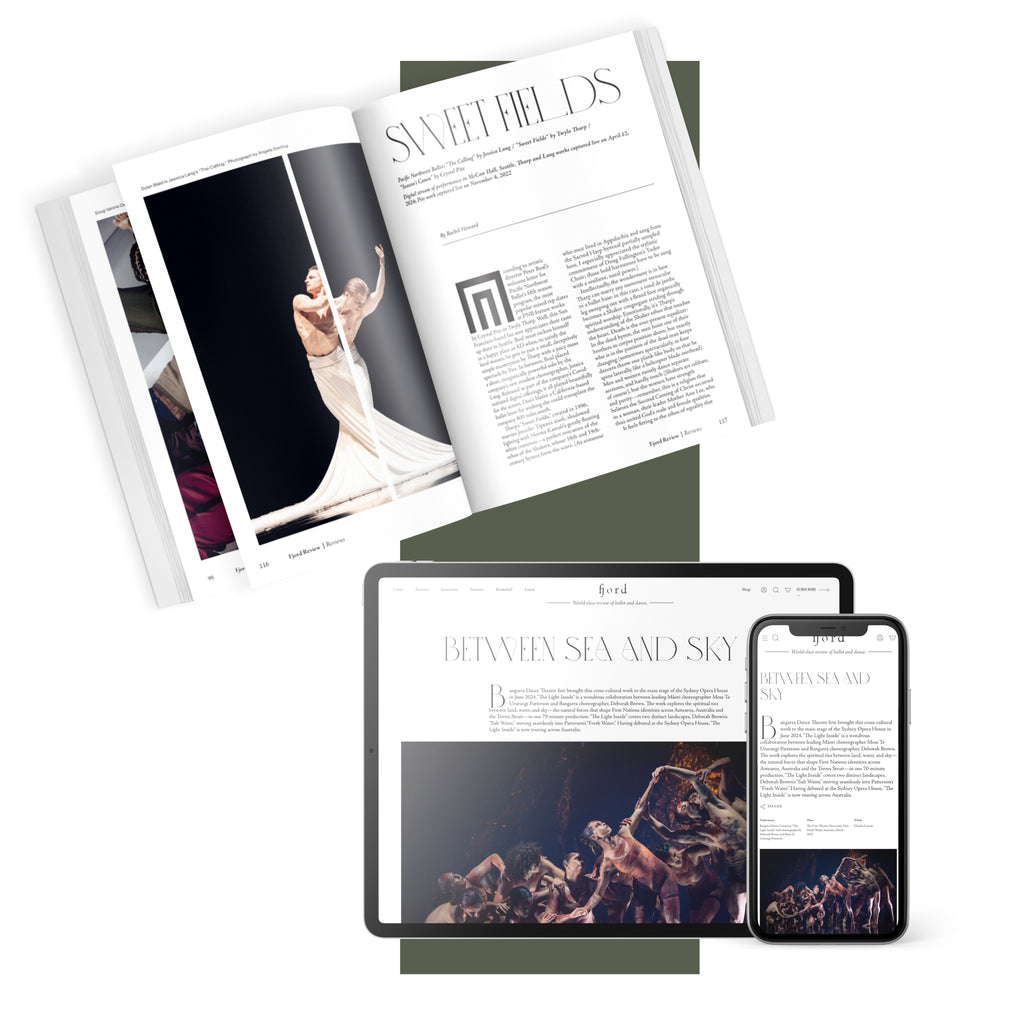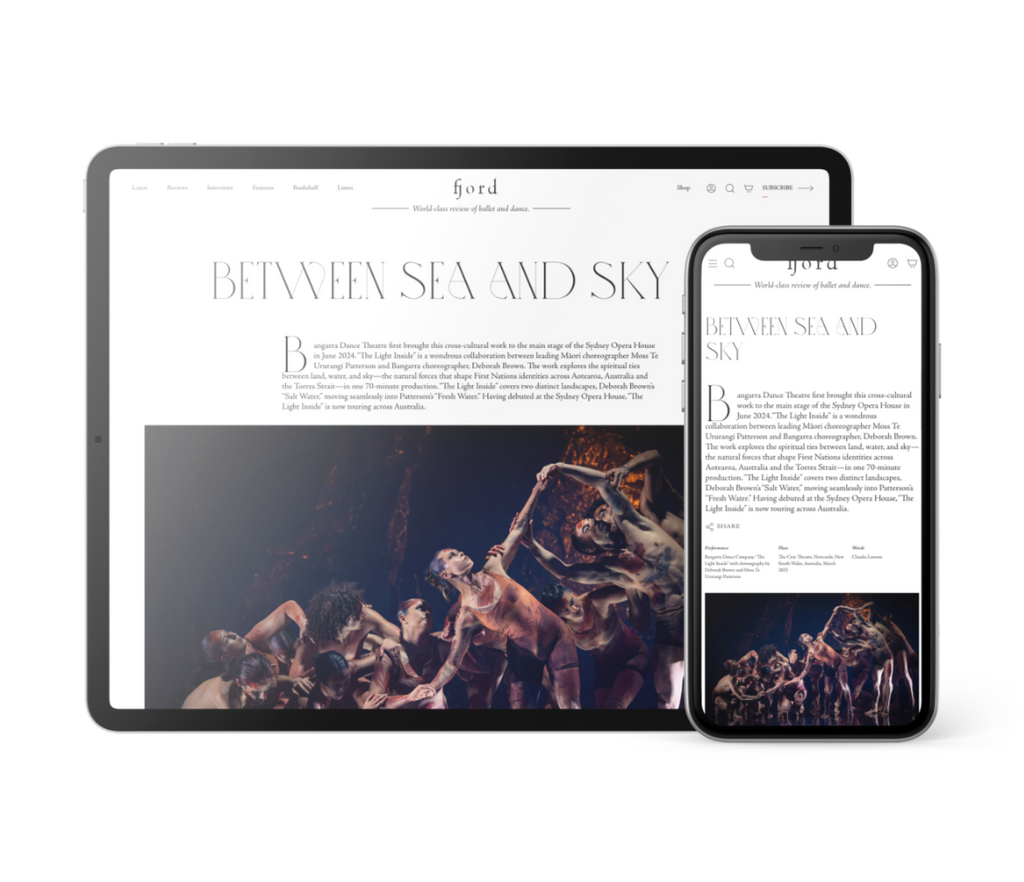With the deliberate, slow pulse of the opening section, I could feel my own breathing slow down. The gentle, sparkling, instrumental tones and rhythm established a feeling of the earth’s rotation as transcendent voices wove themselves into a brilliantly connected sonic universe. The vocal ensemble then sang while seated in a row performing a choreography of arms lifting and reaching across to connect hands forming a crisscrossed chain. This simple design of connectedness shifted into a vocal game of catch. Standing at various points in the space, the performers volleyed tones and syllables back and forth between each other with spirited playfulness.
A lit square appeared in the center of the circular space—referencing the archetype of a mandala. This design, used in Buddhist meditation practices, symbolizes a Buddha field or pure realm. Within this space, the vocalists initiated a simple movement section—walking toward the center of the circle, retreating backward, and sidestepping around the periphery—a folk dance pattern. The dance grew in complexity as the performers divided and, all together, performed alternate movements. With the infusion of energy from the instruments and the addition of a video projection of the birds-eye view of the dance, it became an organized, complex system—a multi-dimensional mandala—connected, coordinated, and beautiful.
The sections ebb and flow eventually building to another striking tableau, in which the vocal ensemble, costumed in white, and the chorus, dressed in black (costume and scenic design by Yoshio Yabara), are all vocalizing and moving within the circular space. Animated, black and white projections of a massive system of branches flow over the performers, the floor, and the screen behind them. The vocal ensemble lies down in a row and reprises the interconnecting arm choreography. At the same time, the video projections change color to red and white suggesting a system of blood vessels within the human body. As the projections revert to black and white, the backdrop screen offers a birds-eye view in real time of the performers interacting with the tree branches—climbing swinging, and leaping. The messages are clear—within each of us is a complex universe, and we are all part of a vast universe that is much larger than our individual selves.











comments